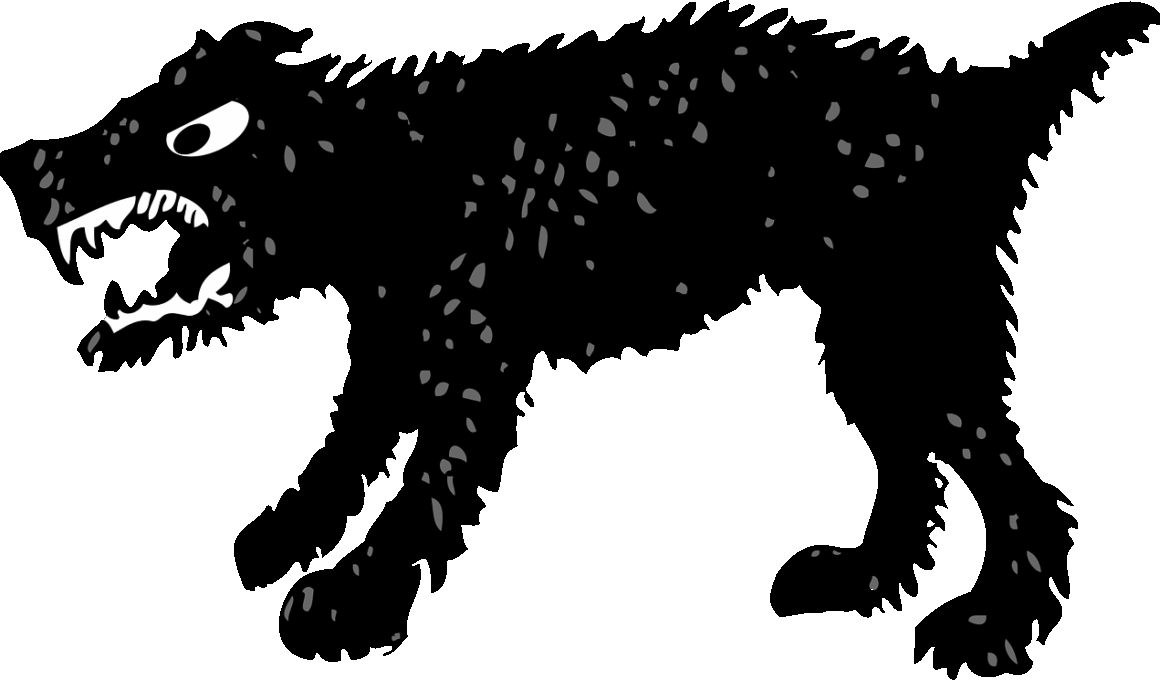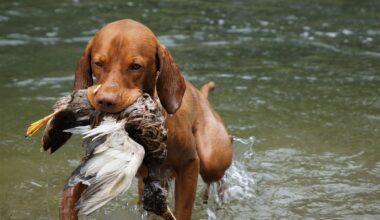Using Positive Reinforcement to Control Territorial Aggression
Territorial aggression in dogs manifests in various ways, including barking, growling, and even biting. This behavior stems from a dog’s innate instinct to protect its space from perceived threats. Territoriality can escalate if the dog feels increasingly threatened, leading to anxiety and aggressive responses. Understanding this behavior is critical for pet owners, as it ensures both safety and harmony in the household. Positive reinforcement is an effective strategy that encourages alternative behaviors. Instead of punishing aggressive behaviors, owners should reward desired responses, creating a more positive learning environment. By focusing on what’s right, dogs are motivated to repeat those behaviors. For example, rewarding calm behavior when a stranger approaches can help modify territorial tendencies. Consistency is key; every member of the household must enforce the same rules. Combining positive reinforcement with proper socialization techniques can lead to reduced aggression over time. Engaging with a professional dog trainer can also help owners devise effective plans tailored to their dog’s specific needs, ensuring a well-adjusted canine companion. In this article, we will examine techniques and strategies for achieving long-term success in managing territorial aggression through positive reinforcement.
One of the first steps in addressing territorial aggression is to identify triggers. Owners must observe what causes their dog’s aggressive behavior. Whether it’s the arrival of guests, other animals, or specific noises increasing your dog’s sense of harassment, recognizing these factors is crucial. Once these triggers are known, desensitizing the dog becomes possible. Gradually exposing the dog to these stimuli in controlled, low-stress situations eases its anxiety and helps it adapt. This can start from a distance and move closer as the dog becomes more comfortable. For instance, if a dog reacts aggressively to visitors, allowing the dog to observe them from a distance can initiate positive reinforcement. Rewarding calm behavior with treats or praise reinforces this new response. The primary goal is to create a safe space where the dog feels less threatened and more receptive to positive interactions. Over time, the dog can learn to associate visitors with good experiences rather than threats. Patience is essential in this process, as behavior modification often requires consistent practice. Investing time and effort into understanding and addressing triggers can significantly improve your dog’s quality of life.
Establishing a Training Routine
Establishing a consistent training routine is vital when working with a dog exhibiting territorial aggression. It allows the dog to learn how to react appropriately to various situations. Owners should implement training exercises that focus on commands such as “sit,” “stay,” and “leave it.” These commands can redirect your dog’s focus away from its aggressive tendencies, reinforcing its positive behavior. Regular practice in different environments will help solidify these commands in the dog’s repertoire. Incorporating short, engaging training sessions into daily routines maintains the dog’s interest and motivation. Always reward the dog with treats or praise when it successfully follows commands. Gradually increasing distractions during training sessions will help your dog learn to maintain composure even in challenging circumstances. Positive reinforcement enhances the bond between the dog and owner, making training enjoyable for both parties. Dog owners should also ensure that their training techniques are fluid and adaptable, as every dog’s temperament differs. Tailoring the training methods to the individual dog’s responses will yield the best results. A well-structured routine promotes a calm and confident demeanor in dogs, resolving territorial aggression effectively.
Socialization plays a crucial role in combating territorial aggression. Exposing a dog to a variety of people, places, and environments helps reduce anxiety and fear. Early and positive social experiences build a dog’s confidence in unfamiliar settings. A well-socialized dog is less likely to perceive intruders or strange circumstances as threats, diminishing aggressive responses. Owners can start socializing their dogs from a young age, introducing them to different people and animals in controlled settings. Puppy classes are an excellent opportunity to facilitate positive interactions. If the dog is older or already displaying territorial aggression, gradual introductions to controlled environments are essential. The key is to keep experiences positive and rewarding. This may involve using treats, praise, and play as incentives. Making social outings enjoyable helps the dog associate new experiences with fun rather than fear. Engaging with other dog owners and their pets can be beneficial, allowing controlled interactions to further enhance social skills. Regular socialization, even after the aggression reduces, will ensure that the dog remains adaptable and secure in various situations.
Redirecting Behavior Through Alternatives
Redirecting a dog’s focus from territorial aggression to more acceptable behaviors is critical in training methods. When a dog begins showing signs of aggression, owners can intervene with a command, such as “come” or “leave it.” Redirecting in this manner shifts the dog’s attention to the owner rather than the perceived threat. Incorporating interactive toys or engaging activities can further distract the dog when triggers occur. Owners can use balls, chew toys, or puzzles to engage their dogs during potentially stressful encounters. The primary goal is to create positive alternatives that initiate more desirable responses. It’s essential to reward the dog once it redirects its attention successfully. This reinforcement builds a new habit that replaces aggressive tendencies over time. During training, remaining calm is important since dogs often mirror their owners’ emotions. Anxiety or frustration from the owner can exacerbate the dog’s aggression. Consistent redirection, alongside the use of positive reinforcement, can lead to long-term success in managing territorial aggression effectively. This proactive approach promotes harmonious living while allowing the dog to express itself without aggression.
Creating a safe and secure environment for dogs displaying territorial aggression is crucial. This involves understanding their needs and respecting their boundaries. Identifying a personal space where the dog feels comfortable can significantly reduce its stress levels. Providing the dog with its own bed or crate helps establish boundaries and creates a designated area it can retreat to when feeling threatened. Establishing house rules about areas that may cause territorial conflicts can help avoid unnecessary aggression. For example, providing training on not entering certain areas or rewarding the dog for ignoring noises outside the home can create a calmer atmosphere. Engaging the dog in calming activities, such as puzzle toys, helps alleviate pent-up energy contributing to aggressive behaviors. Owners should also ensure that their dogs receive regular exercise, as physical activity reduces boredom and anxiety, which are often triggers for aggressive outbursts. Establishing a structured routine fosters a sense of security, allowing dogs to thrive. A calm dog is less likely to react aggressively, creating a more peaceful living environment for everyone involved.
Seeking Professional Help
Sometimes, owners may need to consider enlisting professional help to manage territorial aggression effectively. Professional trainers or canine behaviorists can offer valuable insights tailored to specific situations. These experts can assess the dog’s behavior in a way that helps identify underlying issues contributing to aggression. Many trainers use positive reinforcement methods that align with the strategies discussed so far, ensuring consistency in the approach. They often provide customized training plans that empower the owners to address aggression over time. Attending group classes can also prove beneficial, fostering a sense of community and support for both the dog and owner. Furthermore, trainers may assist in the dog’s socialization process, ensuring a positive experience with new people and situations. In some cases, owners might consult veterinarians to rule out medical issues complicating aggressive behavior. Proper assessment can validate behavioral issues stemming from pain or discomfort. Collaborating with professionals not only improves training strategies but also enhances the overall well-being of the dog. Recognizing when to seek help reflects an owner’s dedication to fostering a loving and safe environment for their canine companion.
In conclusion, managing territorial aggression in dogs through positive reinforcement involves a blend of training, socialization, and environmental adjustment. Understanding triggers, employing redirection techniques, and establishing a safe environment will ensure the dog’s behavior improves over time. Owners play a crucial role in this journey, remaining consistent and patient as they navigate challenges. Providing a secure place for the dog to retreat during stressful situations fosters a positive atmosphere. Regular social interactions prevent fear-based reactions, while routine training reinforces desired behaviors. Ultimately, focusing on encouraging calmness and happiness leads to a well-adjusted and confident dog. When owners prioritize their dog’s emotional well-being, they enhance the bond they share. The journey may take time and dedication, but the result is a harmonious relationship built on trust and understanding. Implementing these strategies carefully will reduce territorial aggression, ensuring the dog can thrive in various situations, creating a harmonious household. Seeking support from professionals may sometimes enhance the effectiveness of the training. The dog’s progress will give owners a sense of achievement as they witness their canine companion transform into a well-behaved, well-socialized member of the family. Every effort will be worthwhile in nurturing their security and happiness.


